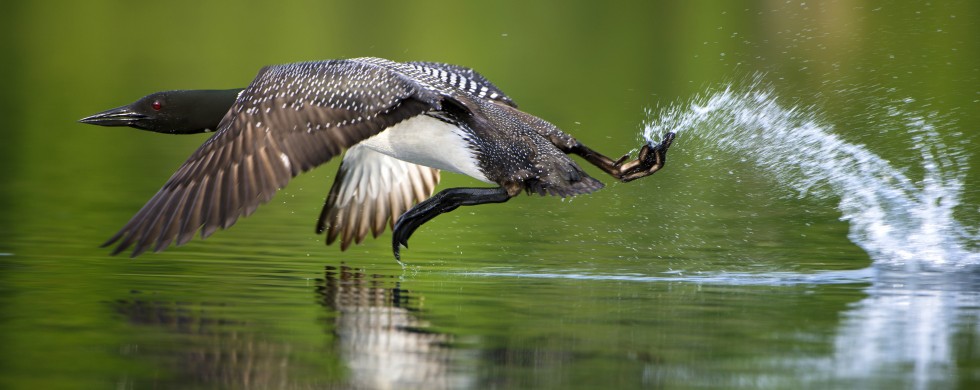
25
2014Looner Flight – No Small Feat
Shot of the Month – September 2014
The Common Loon is the epitome of style and grace — most of the time. Loons spend most of their time on water and their bodies are exquisitely designed to make them powerful and effective swimmers and divers. Most birds have hollow bones while loon bones are solid. This extra weight enables loons to dive to depths of 250 feet in search of fish – the mainstay of their diet. They have large, powerful feet that propel the bird through the water like a torpedo. The bird’s feet are located unusually far back on the body which enable powerful underwater thrusts (imagine the avian version of Michael Phelps and his size 14 feet ). In the air loons are regal athletes that can fly hundreds of miles and reach speeds of more than 70 mph.
Now for some of those less stylish moments in loon life.
Loons have a very difficult time walking on land given the placement of their feet on their bodies. In fact, the name, “loon” most likely comes from either the Old English word lumme, meaning lummox or awkward person, or from the Scandinavian word lum, meaning lame or clumsy. Both of these names refer specifically to how loons look when hoofing it on land. To avoid such embarrassment loons rarely venture on terra firma except to nest and even then their nests are usually found only a few feet from the water’s edge to make for a short commute.
And while loons are powerful flyers they have a bit of a struggle in the transition up and down. Loons are unable to take off from land and on the water they need a long distance as they run across the surface building up momentum. Loons need anywhere from 30 yards to a quarter-mile of running and flapping before liftoff. In my photo above you can see those large feet in full force as he runs for the sky. The need for such space for takeoff means that you will never find a loon in a very small pond or lake as they do not provide enough of a runway for Loony Airlines.
And then there is the landing. Oh boy. Again, as the feet are so far backward loons are unable to land feet first like your typical bird. When they land on water they fly in head first and skim along on their bellies until they slow down. It is a sight to behold.
Incoming……. ……Outgoing
In their formal black and white dress and powerful moves, the common loon has a James Bond mystique. I have to admit a certain schadenfreude in knowing that these superstars also have their Mr. Bean moments like the rest of us.
Until next month…
Exposure:
Nikon D4S, Nikon 200-400mm f/4 (@400mm), f/4.8, 1/1000 s, -0.5 EV, ISO 400

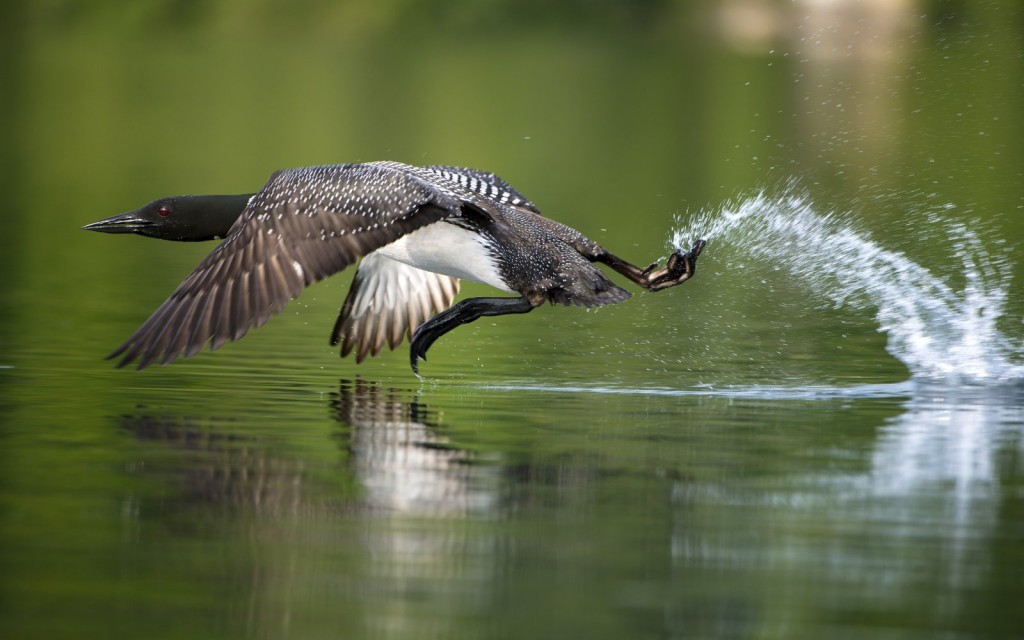
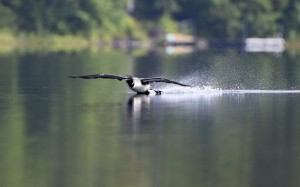
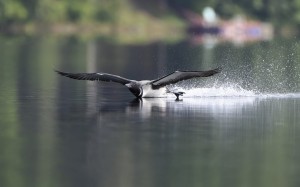
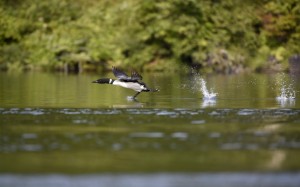
Patricia Mountjoy
Michael, you did it again: absolutely charming, humorous, informative commentary on the photos. I am still smiling as I write this note.
Thank you for the joy of the critter world you bring to my day.
Have a wonderful autumn visit at Yellowstone. Will look forward to seeing the journey in photographs on your next visit to Hanover.
Gang Karume
Dude,
I love this one and your many other previous picctures indeed. I am a Biologist by education but never read or heard about this loons’s life.
Looking forward to more breathtaking stories and pictures from your Yellowstone journey. My very best to Nicky.
G